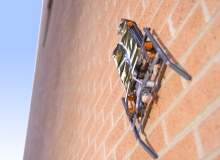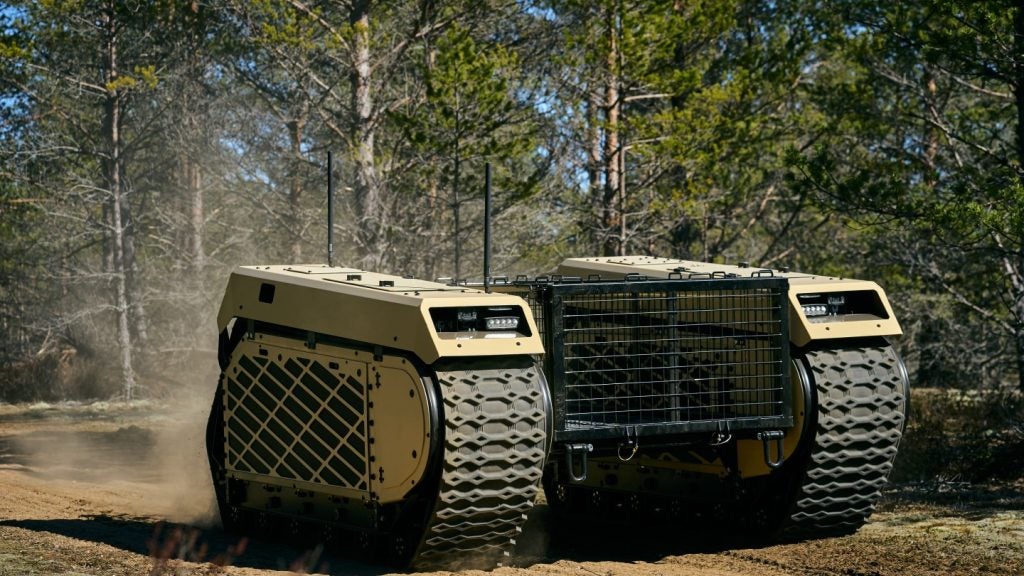
In the military as in industry, robots are called on to perform tasks that are too dull, dangerous or dirty for humans to carry out.
Advances in miniaturisation have brought about a new generation of military robots that introduce a new range of capabilities. Small and light enough for an individual to carry and capable of squeezing undetected into otherwise inaccessible spaces, they can deliver life-saving ISR information to the operator and relay it to a command and control centre.
The first fielded systems to benefit from the miniaturisation trend are ground systems that share much in common with their well-established larger cousins that for decades have been used in explosives reconnaissance and deactivation.
Following hot in their footsteps, researchers are testing tiny robots that can fly, crawl, climb and wiggle into inaccessible spaces to capture data on enemy positions or locate survivors of natural disasters.
Throwable robots
Over the last few years, an entire new category of small robots has begun trials with the military with the aim of transforming personal ISR for foot soldiers. Known as throwable robots, they combine mobility, durability and light weight so they can be thrown over walls and in through windows, where they can be steered remotely to capture data using a range of onboard sensors. Highly adaptable, they come with a variety of accessories, cameras, payloads and methods of locomotion.
The US Army has thrown its weight behind this new technology, illustrated by it placing the biggest unit order to date for micro-robots to be used by dismounted soldiers in February 2012.
How well do you really know your competitors?
Access the most comprehensive Company Profiles on the market, powered by GlobalData. Save hours of research. Gain competitive edge.

Thank you!
Your download email will arrive shortly
Not ready to buy yet? Download a free sample
We are confident about the unique quality of our Company Profiles. However, we want you to make the most beneficial decision for your business, so we offer a free sample that you can download by submitting the below form
By GlobalDataThe US Army Contracting Command, on behalf of the US Army Rapid Equipping Force, awarded ReconRobotics a $13.9m contract for 1,100 Recon Scout XT micro-robot kits, plus another two contracts worth further $1m for accessories.
On announcement of the contract, Ernest Langdon, director of military programmes for ReconRobotics, said: “Although these 1.2lb (544g) robots are exceptionally small, they will play a big role in providing our warfighters with increased situational awareness and standoff distance as they conduct operations in active combat theatres.”
The dumbbell-shaped XT robot is used in combination with a handheld operator control unit that controls it and displays the real-time video it captures. Together they weigh just 1.3kg, minimising the burden on troops.
So they cannot be detected and destroyed by the enemy, the XT operates very quietly and is equipped with an infrared optical system that turns on automatically in low light, enabling the operator to explore an environment in complete darkness. The robot can be deployed in five seconds, be thrown up to 36m and transmit video up to 30m indoors and 91m outdoors.
Mini robots run IED gauntlet in Afghanistan
As they can explore tiny hidden spaces, one of the main applications for throwable micro robots will be in countering the ongoing IED threat in Afghanistan, where improvised bombs are often hidden in roadside culverts. The US Joint IED Defeat Organisation (JIEDDO) recognises this and a new project will see a range of throwable robots trialled in the field.
As a result of an urgent operational requirement (UOR) from commanders for a lightweight, easy-to-use robot that could remotely inspect confined spaces from a safe standoff distance, JIEDDO worked with the National Institute of Standards to compare six models over a series of standardised tests.
The Recon Scout XT has made the shortlist and is the lightest of the models selected.
At the other end of the scale is QinetiQ’s Dragon Runner 10 (DR10), weighing in at a hefty 4.5kg, 38cm long and 15cm tall. When thrown, DR10 has the ability to automatically flip video images, antennae and controls, according to how it lands. Multiple payloads are available, including a variety of sensors, radios, cameras and robotic arms. DR10 can be equipped with either tracked or wheeled mobility options to negotiate various types of terrain.
Current US Army favourite iRobot has put forward its sturdy 100 FirstLook, a 2.3kg, 25cm long and 10cm tall model that can withstand drops of 4.6m onto concrete and is waterproof to 1m. It can climb steps and negotiate other obstacles up to 20cm high and can run for six hours in normal usage, or carry out stationary video monitoring for up to ten hours.
The outsider in the race is the less well-known Macro USA with its 28cm long, 18cm high 2.5kg Armadillo robot, which can withstand 2.5m drops onto concrete or 8m horizontal throws. Equipped with a camera and a microphone, it boasts three speed modes for different missions: creep, normal and escape. It comes with wheels and can be fitted with a track kit or a kit than enables it to negotiate stairs or other obstacles.
From the shortlist, 100 of each of the four models has been ordered at a cost of $22 million, which will be sent to Afghanistan for operational user tests later in 2012.
Flapping, crawling and climbing biomimetic robots
The microbots currently under consideration are essentially miniature versions of full-sized land systems that have provided reconnaissance and bomb disposal support for the military and in civil defence for decades. The latest research could see the next generation of nature-inspired biomimetic robots flapping, crawling and climbing into ever more inaccessible areas.
Man-portable UAVs small enough to be stowed in a backpack, such as Elbit Systems’ Skylark family and Lockheed Martin’s Desert Hawk, are a well-established technology. AeroVironment‘s Nano Hummingbird, a tiny two-wing bird-shaped flapping aircraft could bring UAVs down to pocket size. Sponsored by the Defense Advanced Research Projects Agency (DARPA), the hummingbird weighs just 19 grams — less than an AA battery — and has a wingspan of 16.5cm.
Steven Gitlin, vice president of AeroVironment, said: “It is very manoeuvrable, currently capable of speeds from hover to 11 mph, and in the future, we expect top speeds of more than 20 mph. It can accelerate and decelerate more rapidly than other currently fielded UAVs, which will allow operations in tight quarters such as around buildings, people, and through trees.”
Under another DARPA-funded project, SRI International is developing wall-climbing micro robots which can scale vertical surfaces using compliant electroadhesion, a technology which electrically controls surface ‘stickiness’.
Much research has been carried out into snake-like robots due to their ability to crawl into the tightest spaces without requiring ground clearance. One of the latest innovations developed by Georgia Tech researchers, ‘Scalybot 2’ employs rectilinear motion, one of the slowest methods of locomotion but the best for squeezing into tight spaces.
Scalybot 2 mimics a snake lifting the scales of its belly to pull itself forwards using artificial scales that automatically adjust to the surface it is traversing and the angle of the terrain.
Micro robots swarm together
Due to their size and ease of carrying, future microbots could really come into their own through swarming. Swarming technology already enables full-size robots and unmanned aerial vehicles (UAVs) to autonomously interact to carry out joint missions, responding to moves made and data captured by each other.
Swarming could even solve the problems of making repairs and building parts for micro robots in the field where resources are limited.
In March 2011, the US Navy issued a request for proposals for a group of micro-scale robots that can interoperate as a swarm to carry out the desktop manufacture of novel materials and components. The robots would operate together in a coordinated and distributed swarm to assemble materials and components from nano and micro-scale building blocks.
Microrobot revolution
Small robots have already established themselves as indispensible personal ISR resources for dismounted soldiers on the battlefield. Should the technology currently under development come to fruition, combatants could select a range of tiny robots best suited to their mission, which could interact autonomously and deliver both personalised ISR data and a combined overview to inform a command and control centre.




